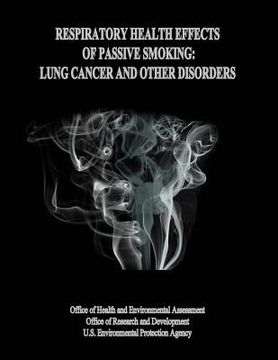Respiratory Health Effects of Passive Smoking: Lung Cancer and Other Disorders (in English)
Synopsis "Respiratory Health Effects of Passive Smoking: Lung Cancer and Other Disorders (in English)"
An estimated 434,000 deaths per year in the U.S., or more than one of every six deaths, are attributable to tobacco use, in particular cigarette smoking (CDC, 1991a; figures for 1988). Approximately 112,000 of these smoking-related deaths are from lung cancer, accounting for an estimated 87% of U.S. lung cancer mortality. Cigarette smoking is also causally related to cancer at various other sites, such as the bladder, renal pelvis, pancreas, and upper respiratory and digestive tracts. Roughly 30,000 deaths per year from cancers at these sites are attributable to smoking. Furthermore, smoking is the major cause of chronic obstructive pulmonary disease (COPD), which includes emphysema, and is thought to be responsible for approximately 61,000 COPD deaths yearly, or about 82% of COPD deaths. Tobacco use is also a major risk factor for cardiovascular diseases, the leading cause of death in the U.S. It is estimated that each year 156,000 heart disease deaths and 26,000 deaths from stroke are attributable to smoking. In addition to this substantial mortality, the association of smoking with these conditions also involves significant morbidity. Smoking also is a risk factor for various respiratory infections, such as influenza, bronchitis, and pneumonia. An estimated 20,000 influenza and pneumonia deaths per year are attributable to smoking. Smokers also suffer from lung function impairment and numerous other respiratory symptoms, such as cough, phlegm production, wheezing, and shortness of breath. In addition, smokers are at increased risk for a variety of other conditions, including pregnancy complications and ulcers. Although the exact mechanisms and tobacco smoke components associated with these health effects are not known with certainty, more than 40 known or suspected human carcinogens have been identified in tobacco smoke. Many other toxic agents, such as carbon monoxide, nitrogen oxides, ammonia, and hydrogen cyanide, are also found in tobacco smoke. Smokers, however, are not the only ones at risk from exposure to these tobacco smoke toxicants. In utero exposure from maternal smoking during pregnancy is known to be associated with low birth weight and increased risk of fetal and infant death. Furthermore, nonsmokers might be at risk for smoking-associated health effects from "passive smoking," or exposure to environmental tobacco smoke (ETS). When a cigarette is smoked, approximately one-half of the smoke generated is sidestream smoke (SS) emitted from the smoldering cigarette between puffs. This SS contains essentially all of the same carcinogenic and toxic agents that have been identified in the mainstream smoke (MS) inhaled by the smoker). SS and exhaled MS are the major components of ETS. Environmental monitoring and measurements of biomarkers for ETS in the biological fluids of nonsmokers demonstrate that ETS constituents can be found at elevated levels in indoor environments where smoking occurs and that these constituents are inhaled and absorbed by nonsmokers. Twenty-six percent of the U.S. adult population, or about 50 million Americans, are smokers, and so virtually all Americans are likely to be exposed to some amount of ETS in the home, at work, or in public places. Measurements of biomarkers for ETS in nonsmokers confirm that nearly all Americans are exposed to ETS. In view of the high levels of mortality and morbidity associated with smoking, the chemical similarity between ETS and MS, and the considerable likelihood for exposure of nonsmokers to ETS, passive smoking is potentially a substantial public health concern. The objectives of this report are to assess the risk to nonsmokers for respiratory health effects from exposure to ETS (hazard identification) and to estimate the population impact (quantitative population risk assessment) of any such ETS-attributable respiratory effects.

